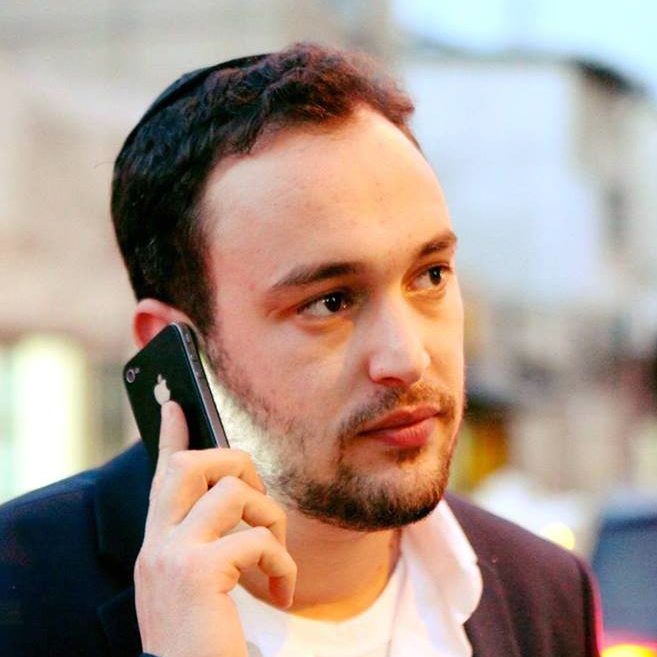your True Colors

Artist Gil-Ad Stern says you don’t have to draw religious objects to create holy art. It’s about how you view your inner canvas

E
ntering Gil-ad Stern’s Jerusalem art studio, I’m transfixed by a pair of eyes — wise, discerning, and deep — that seem to pop out of the huge canvas standing on the easel. It’s a larger-than-life painting of the gaon and tzaddik, Rav Moshe Shapira ztz”l, one of the greatest thinkers of the generation, and whose portrait has become Stern’s claim to fame.
“I knew Rav Moshe a little, not enough,” says the 35-year-old artist as he examines this master work, a project that eventually brought Rav Moshe into the depths of the artist’s consciousness. “When I started to sketch his likeness, I listened to many of his shiurim in order to get more connected to him. The more I progressed with the painting, the more I felt the loss of his passing, and the more I yearned for what I could have had, if I’d taken the opportunity when it was available. For several weeks, while working on this portrait, I hardly left my studio. I just worked and worked, with Rav Moshe’s voice in the background.”
The portrait was commissioned by one of Rav Moshe’s talmidim. “I was working off several photos, but I decided to base it on a particular photo taken by Rabbi Akiva Tatz. Rav Moshe looks as if he’s on the verge of saying something, and that’s what I tried to convey — that special moment, when he faces a talmid who is anticipating Rav Moshe’s words of Torah and then becomes a vessel to receive and hold them.”
Gil-ad (“Gili”) Stern is philosophical when he discusses his most famous portrait to date. “There’s something otherworldly about our G-d-given ability to preserve a person’s image. I miss Rav Moshe very much, yet through the portrait, I can still stay close.”
A Thousand Words
Gil-ad Stern was born in Baltimore during the year his father, a chemist at the Weizmann Institute in Rechovot, relocated with his family to the US to complete a postdoctorate program. The following year, the family returned to Rechovot, where young Gil-ad attended cheder. When he was 14, he enrolled in Yeshivas Chochmas Shlomo, and then continued on to Yeshivas Bircas Yosef in Bnei Brak.
“I’ve loved to draw for as long as I can remember,” he says. “When I was three, I’d ask my father to draw me elephants and horses, and after school, we’d sit down and draw together.” During his years in cheder, he always seemed to be sketching something on the side, but by the time he entered yeshivah, he’d decided to put away his pencils and pastels — he was a serious student and didn’t want the distractions.
When he was 18, he left Bnei Brak for Jerusalem and settled into the Mir, but serious drawing still wasn’t on his radar, except for a sketch here and there. Still, one of those drawings from his yeshivah days hangs in his workshop: two fans next to a Borsalino hat box. “There’s something about that picture that just captures the yeshivah experience,” Stern says.
Stern learned in Mir for the next seven years, and then began studying art with the encouragement of Rav Simcha HaKohein Kook, the rav of Rechovot. Today, he makes his parnassah from his art — including studio work and private and group lessons teaching men and bochurim (“You’d be surprised how in-demand my classes are for avreichim. Who would have thought?”) — although he’s strict about keeping his mornings free to learn Torah in the Yad Binyamin Kollel, located in Jerusalem’s Misgav Ladach medical center.
(Excerpted from Mishpacha, Issue 696)
Oops! We could not locate your form.







